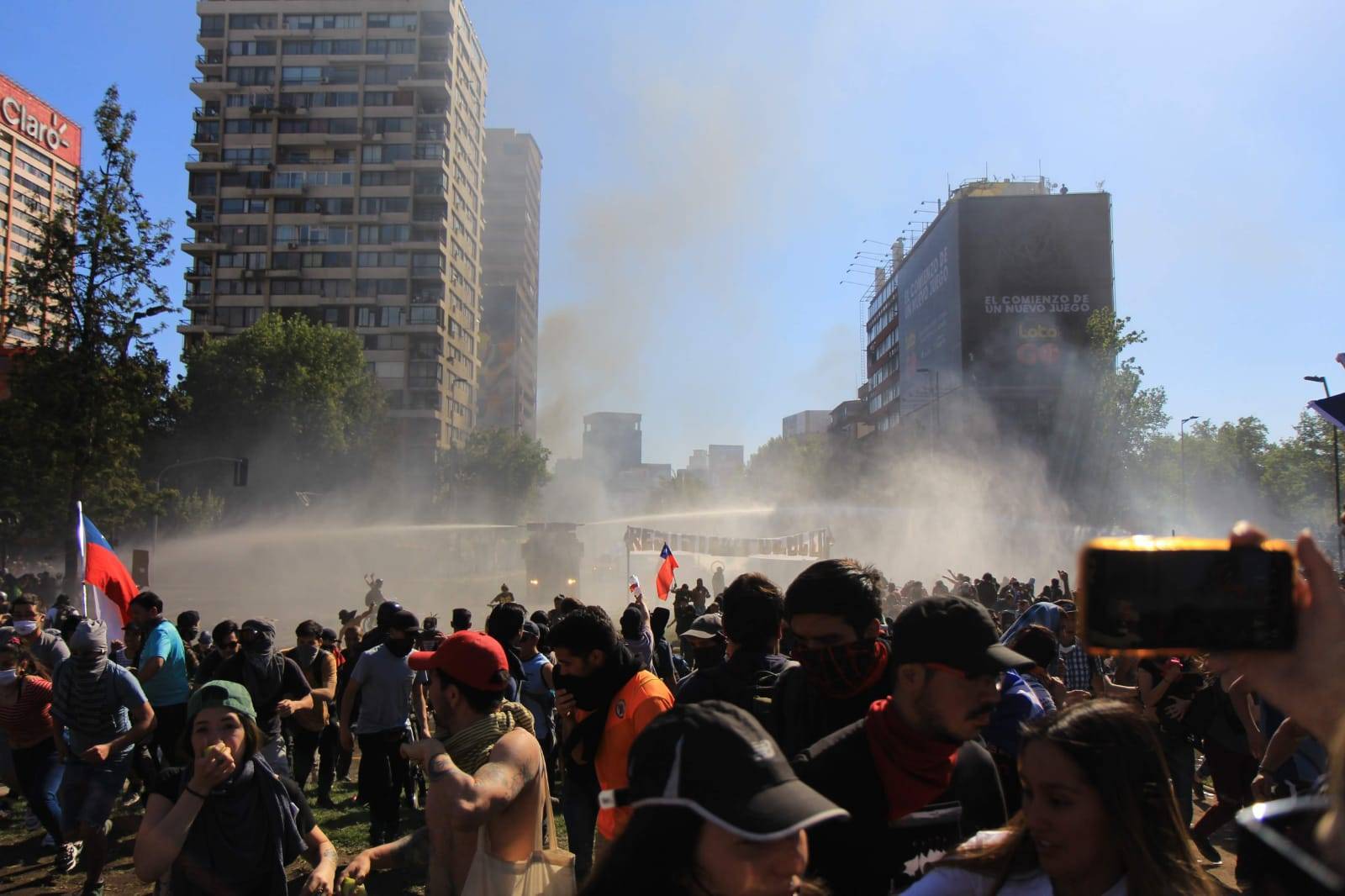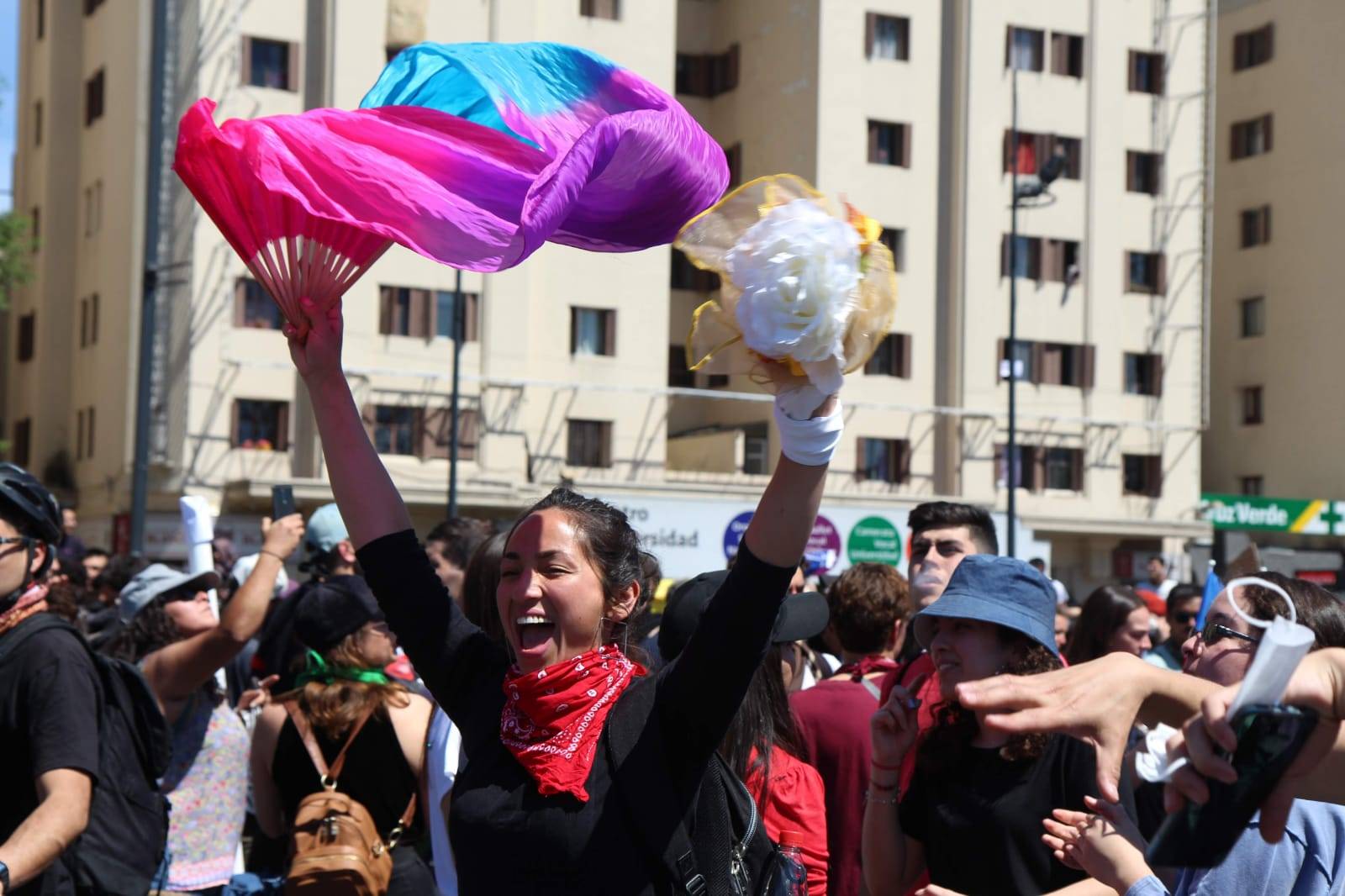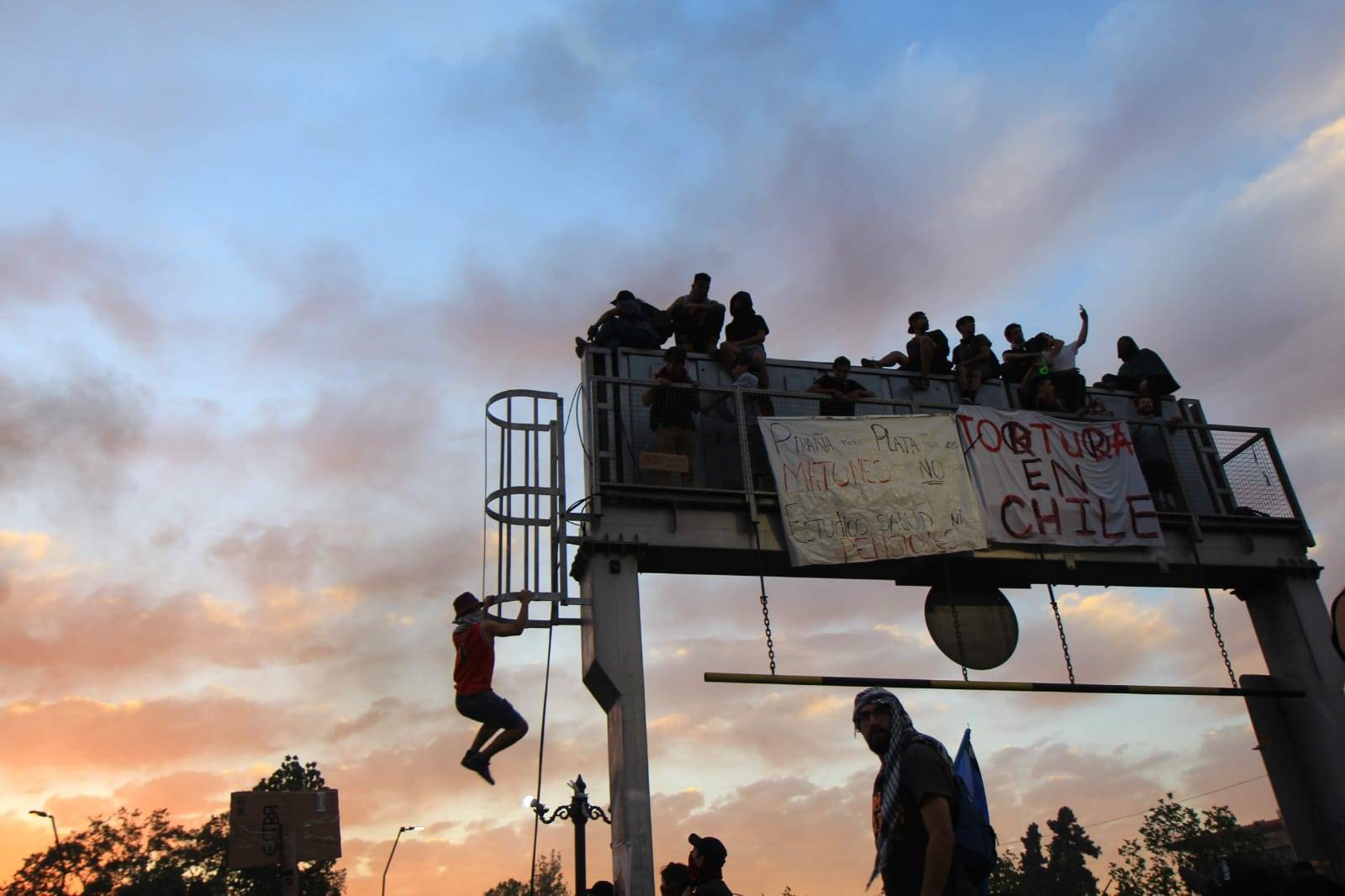On 26 October 2019, during the heydays of the Chilean Protests, hundreds of people were waiting for Joshua Maureira outside the prosecutor’s office where he was giving his statement. Protesters wanted to send a message of support to Joshua and to loudly denounce state violence. Moved by this demonstration, Joshua courageously decided to raise his voice too. He shared with them his sexual victimization experience at the hand of Chilean police, despite the death threats he received. He reported having been repeatedly beaten by the police until losing consciousness. Joshua said that when the officers realized he was wearing red nail polish things got totally out of control, beatings intensified as homophobic verbal assaults begun, then they raped him with a collapsible baton into his anus.
The Office of the High Commissioner for Human Rights (OHCHR) Report of the Mission to Chile disclosed also the stories of Sonia (26 years old) and Carmen (28 years old). While detained in La Serena station, the two women have been abused by military officers who — their faces covered — repeatedly touched their genitals, breasts and butts.
Joshua, Sonia and Carmen were all participants to the social protests, called the Estadillo Social, that begun in Santiago on the 18th of October 2018. Protests suddenly evolved into a series of massive demonstrations spreading all over the country and involving people of all social strata and ages. Demonstrations reached their intensity peak during the subsequent months, and as protests intensified the repressive conduct of the Chilean security and police forces escalated too.

During the heydays of the Estadillo, President Sebastián Piñera declared the state of emergency and imposed a curfew; these measures were coupled with a massive deployment of security forces. At the same time, the number of accusations by feminist and human rights organizations of alleged human rights violations committed by security forces skyrocketed.
In concrete terms, the Chilean National Institute for Human Rights documented more than 800 cases of excessive use of force, about 400 cases of torture and cruel treatment, and 194 cases of sexual violence. The Carabineros (the Chilean national police force), an armed force seriously reformed after the fall of the Pinochet regime, is the main body responsible for such violations.
The stories of Joshua, Sonia and Carmen resonate with those narrated by hundreds of witnesses, collected in the Informe Valech (officially “The National Commission on Political Imprisonment and Torture Report”), a report published in 2004 on the abuses committed between 1973 and 1990 by agents of the regime. The report described sexual violence as a specific form of torture; as Beatriz Bataszew, held in the centre for sexual tortures for political opponents called Venda Sexy, confirmed to El País. She asserted: “This was not only sexual violence, it was political sexual violence; its main objectives was to domesticate us, to discipline us and particularly to punish us because we were women firmly fighting against the dictatorship”.

Bataszew’s words raise a fundamental point: the political meaning that sexual violence assumes when performed by state officials once the political order is at stake. It is important to clarify what this political nature consists of, in order to fully understand why such types of violations were so pervasive during the Estadillo too.
A ground-breaking conceptual shift, regarding the understanding of this type of violence, has been reached with the Inter-American Court of Human Rights case “Mujeres Víctimas de Tortura Sexual en Atenco México”. The sentence issued in 2018 condemned the Mexican state for the abusive conduct of its agents during the repression of the Atenco protests in 2006. It is fundamental to address this case, since it provides novel instruments to understand sexual violence during social manifestations at the hand of state security forces. In concrete terms, while before conflict-related sexual violence had been recognized as the only type of violation having a political meaning and implication, the Atenco sentence introduced a new exception to the widespread rationale that sexual violence is an unfortunate but random occurrence. Sexual violence in the context of the repression of social protests has been recognized as political in nature. It therefore allows to better grasp the mechanic and the meaning of these events during the Estadillo, which are political in nature as well.
Indeed, it was directed towards the protesters with the aim of humiliating and intimidating them. Their victimized bodies acquired a symbolic meaning through violence. They not only became a reminder of the fact that they shall not get involved again into the political life of their country, but they became the medium to convey a message of deterrence to all the other protesters. Sadly, as it often occurs, women and the members of other marginalized groups (as the LGBT+ community) faced a double burden. They were not only punished for their political participation to demonstrations, but also for not complying with the social expectations stemming from their subjugated roles in patriarchal societies. Women and other people from marginalized groups have not only been punished for reclaiming their rights, but also for leaving the kitchens in which they have been relegated; they have been punished not only for speaking out against the system of oppression they were subjected to, but also for breaking the veil of invisibility behind which their experiences have been hidden. Now it is easier to see how sexual violence during social manifestations in Chile has been employed as an additional instrument of social control and repression, alongside teargas and rubber bullets.

This kind of understanding of sexual violence at the hand of security forces during social manifestations, therefore, allows to comprehend that this is not an isolated and new phenomenon. It allows to understand that it directly stems from the country’s dictatorial past, which has never been completely overcome, finally demonstrating the need for structural reforms and cultural change. It uncovers the continuum of political sexual violence, enforced both by the Chilean authoritarian security forces and by the democratic ones. It reveals the circularity of Chilean history, which is particularly intense due to its profound legacies and scars. It is no coincidence, indeed, that one of the main achievements of the Estadillo has been the October 2020 referendum where 78% voted for the drafting of a new Constitution, in order replace the 1980 one, drafted by the regime itself.

In fact, the efforts of the Chilean civil society are precisely directed towards the objectives of boosting structural reforms, that each group attempts to reach through its own specific strategy. However, it is fundamental to highlight that sharing the same goal contributes to unify these apparently separated struggles, making the results obtained by each group co-constitutive of the results of the others.
For example, the main objective of two feminist groups Las mujeres no olvidamos ni perdonamos ningún golpe and Mujeres sobrevivientes, siempre resistentes, which mainly consist of women who have survived sexual violence during Pinochet regime, is to spread awareness on the political nature of these kind of abuses. The aim is to highlight that this is a specific type of violence which therefore needs to be specifically investigated, judged and sanctioned. They want the memory of these atrocities to be preserved, so that they are not to be repeated in the future. Since (sadly) they are currently being repeated, the collaboration between these old-guard groups and the new generation organizations stemmed spontaneously.

Some among the most important (relatively) new groups are the Red Chilena contra la Violencia Hacia las Mujeres and the Agrupación Lésbica Rompiendo El Silencio. Moreover, the organization ABOFEM en tu Barrio (composed of feminist lawyers) is active in providing free legal assistance to people affected by gendered discrimination or violence; during the Estadillo they reported to have intensified their work, in order to keep pace with the increasing rate of sexual violations. Finally, feminist organizations dedicated to art and communication played a crucial role in the unfolding of the events. Indeed, the music band Las Tesis released the song “Un Violador en tu Camino”, which not only became the Estadillo's unofficial anthem, but went viral and was performed during feminist manifestations all over the world.
Chilean feminist and LGBT+ social movements are employing art and the more disparate channels of communication; they are distributing free legal instruments and dignifying the obliviate memory of a generation. Their struggle is multifaceted, multi-layered and unremitting: they will continue until the Chilean circle of sexual political violence is finally broken.
All photographs (C) Sofia Bifulco, reproduced with the author's permission.
